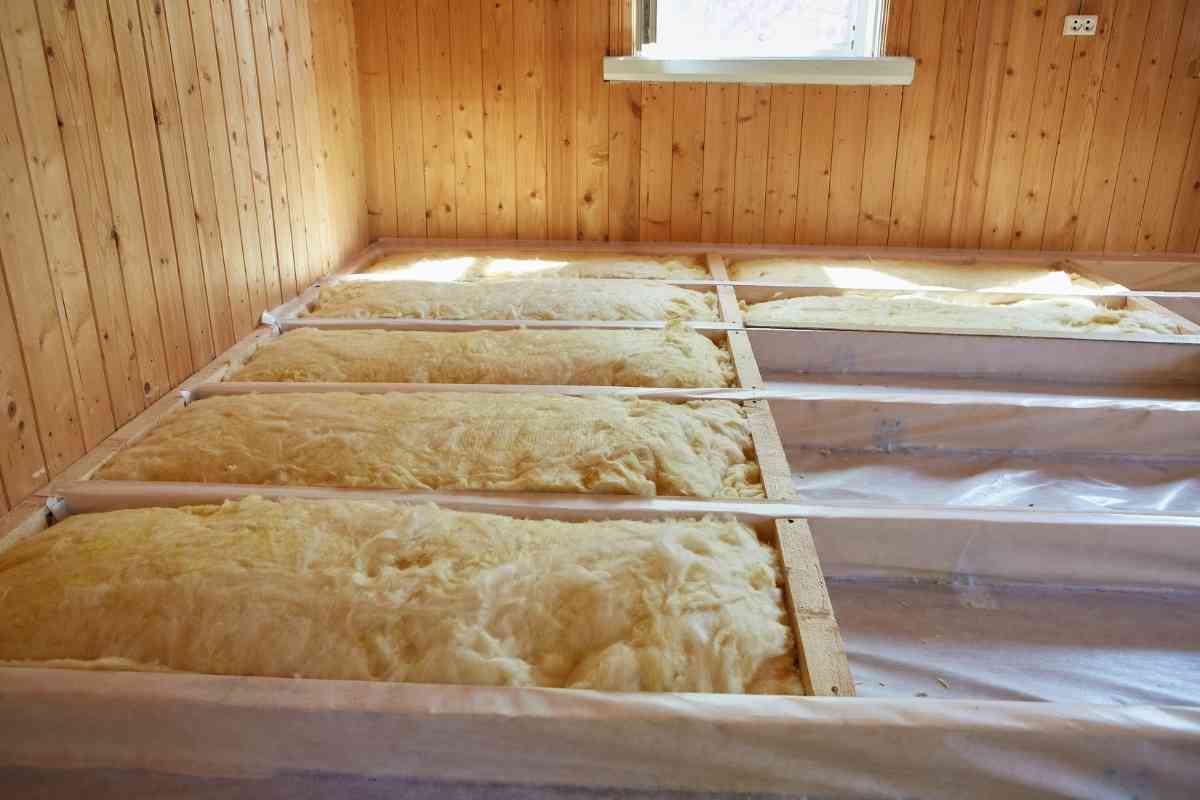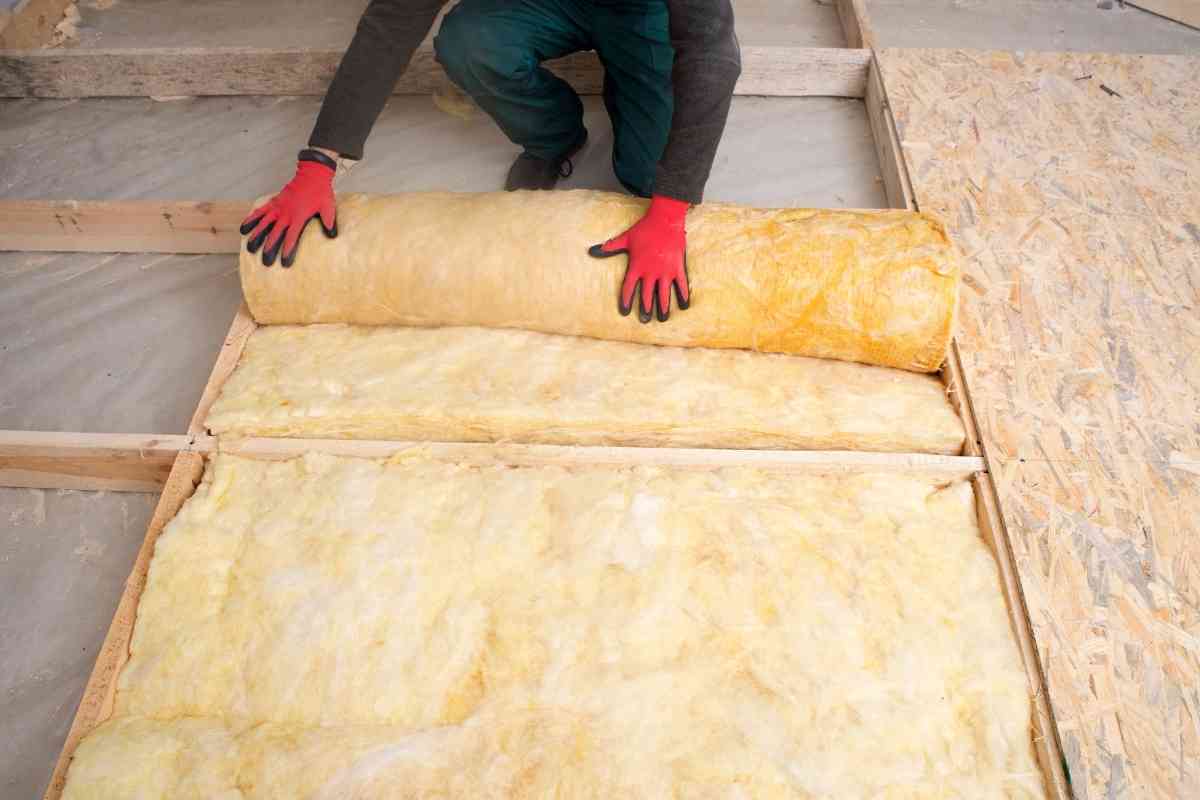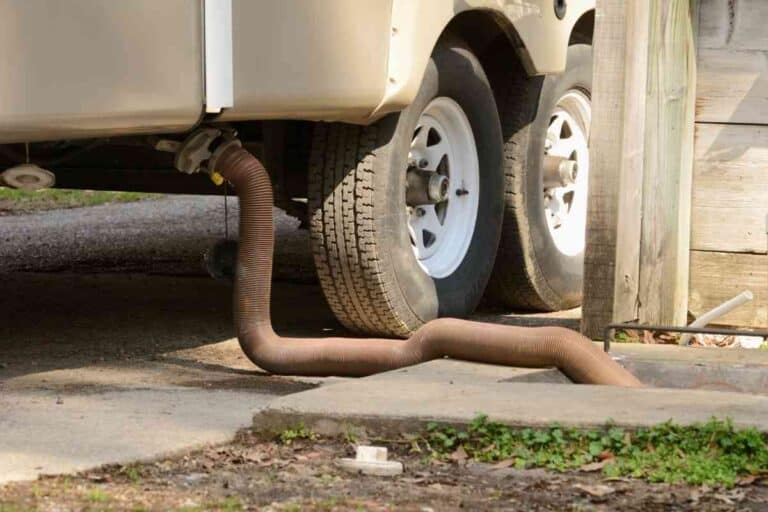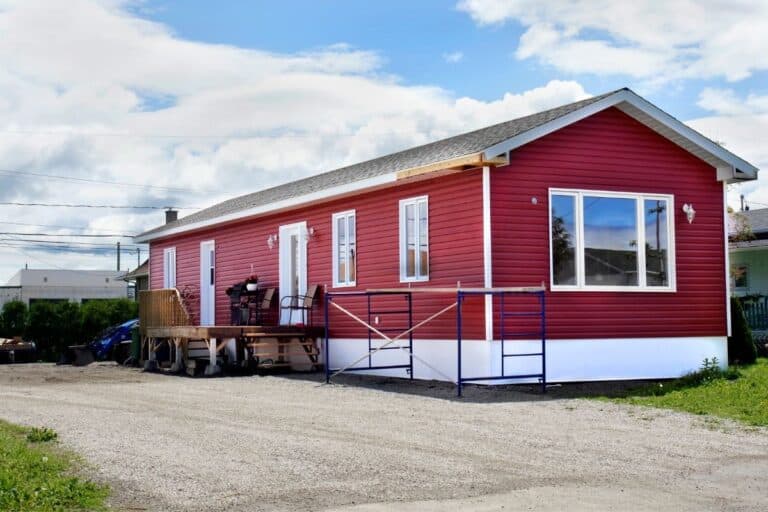4 Commonly Used Types Of Insulation Used Under Mobile Homes
If you own a mobile home, you might be wondering what type of insulation is used under one. Due to their accessibility and cost, mobile houses have recently gained immense popularity. However, a lot of mobile homeowners have never given any thought to how well insulated their house is.

What kind of insulation is used under a mobile home?
The most common type of insulation method for mobile homes is fiberglass insulation. It is a great choice since it does not rot or burn. In addition, open cell spray foam is also a great choice and can be sprayed straight into the rim joist and onto the skirting.
Since many mobile homes are constructed and erected in more temperate climates, many builders choose not to insulate them at all because the local climate provides generally comfortable temperatures all year long.
We’ll look at some of the best insulation options for mobile homes and explain why you should think about having your mobile home’s insulation properly inspected and updated.
How to insulate under a mobile home
Most mobile home owners do not take into consideration the fact that the world is experiencing progressively chilly winters and hotter summers, nor does it take into account the various safeguards that insulation offers for your home, like keeping out pests.
The under-insulation of mobile houses is one of their main issues. Insulation in mobile homes‘ walls, ceilings, and the foundation is generally little. Additionally, they have a reputation for having drafty entrances and unreliable inside temperatures, which will make you and your family uneasy.
With the right insulation, you can maintain the temperature inside your mobile home without worrying about air leaks and draughts.
The investment in insulation pays off greatly. To help keep everything, from your AC units to your pipes, in good working order and to help you save a lot of money on heating and cooling costs, you want to make sure your mobile home is well insulated.

Is it challenging to insulate mobile homes?
There are particular difficulties with mobile houses and trailers. For instance, since reducing weight is a priority, wall studs in mobile homes are frequently smaller than those in traditional homes. This makes it much simpler for heat to pass through the walls and perhaps more challenging to install new insulation or upgrade old insulation.
We’ve compiled a thorough list of the best insulation options that are suitable for both new and vintage mobile homes.
What Type of Insulation Is Used Under a Mobile Home?
Insulation Blankets
One popular form of insulation is blanket insulation. It is a blanket made of numerous layers of rock wool, fiberglass, or other comparable materials that can be put on walls, ceilings, and floors. To shield it from moisture and other intrusions, it is frequently sandwiched between heavy layers of paper or cardboard.
If you’re looking to keep prices down, this is an excellent alternative because it’s also one of the most readily available and cost-effective insulation methods.
Glass Fiber Board
Fiberglass board insulation is constructed of layers of fiberglass placed one over the other, much like a fiberglass insulation blanket. Instead of being squeezed into a flexible blanket, the layers in a fiberglass board are compacted into a rigid board.
ue to its stiffness, this type of insulation might be a little trickier to install. Hence expert installation is advised.
Spray Foam
In a spray foam insulation method, the space to be insulated is filled with an expanding foam material using specialized equipment.
For both older and modern mobile homes with irregular wall spacing, this is a very effective insulating solution. A mobile home’s thinner walls are perfect for spray foam insulation because of their excellent ability to fit into small spaces.
Foam boards are also an option if you don’t mind the DIY project of cutting them to size.
Air-Blown Insulation
Blown-in insulation is placed similarly to spray foam insulation by employing specialized machinery to blow the insulation into the space.
However, loose-fill insulation insulates the space using a combination of loose recyclable materials like cellulose or fiberglass rather than foam. This is a fantastic option for mobile home owners since it fits into small wall openings, just like spray foam insulation. Plus, it’s typically less expensive than spray foam.
How Do I Pick the Best One for My Mobile Home?
The best place to start when installing insulation in a new mobile home or updating the insulation in an older one is with an expert examination. In order to determine the existing condition of your insulation and to determine which types of insulation will work for your particular home, it is best to examine your mobile home extensively.
Professionals are skilled in the installation of various types of insulation materials. When you schedule an inspection, they will come prepared with cutting-edge tools to perform a comprehensive assessment of your house from top to bottom. They will offer a thorough evaluation of the state of your property and draw on their vast knowledge to create custom solutions that are tailored to your requirements.
Due to the uniqueness of each home, experts may recommend a combination of installation choices to best safeguard your mobile home from problems with cold, heat, moisture, or other invasions.
By choosing an insulation specialist, you can benefit from the years of energy savings that professionally placed insulation will provide, in addition to getting a home that is protected against pests, dirt, moisture, and other problems. To arrange a consultation and start enjoying the energy-saving advantages of expertly placed, custom-fit insulation, contact us right away.
Making a choice about the materials that would work best for your project can be a little intimidating. There are factors to take into account, such as the cost of insulating your mobile home and the effectiveness of the insulation.
It’s crucial to seal the air in your mobile home so that you won’t experience issues like draughts, uncomfortable spaces, mold, or excessive energy costs.
Benefits of Replacing the Insulation in a Mobile Home
Reduced Utility cost
The Insulation Institute claims that by insulating their homes, mobile homeowners can save 15% on heating and cooling costs. In fact, because older homes are frequently inadequately insulated, to begin with, the number rises in older homes.
Better Comfort
It’s not just about saving money when replacing the insulation in mobile homes. There is unquestionably something to be said for more comfort. Better insulation makes it simpler to maintain a comfortable indoor temperature year-round.
R-Value – What Is It?
R-Value comes up frequently when talking about mobile home insulation, but what exactly is it? The R-values of various insulating materials will vary. The ease or complexity of installation, price, and the R-Value you receive for your money and work should all be taken into account when selecting the best insulation.
Generally speaking, heat moves from warm to cool locations. Your home’s heated air will be attempting to escape throughout the cooler months.
The heated air outdoors will be attempting to move within during the summer. This happens as a result of convection and conduction. Let’s examine how materials in your house respond to this natural law:
The R-value of a substance indicates how well it can withstand heat flow. The better it is in insulating your home, the higher the R-value.
Conduction
Insulation acts to change the conductive property of materials, which is how warm air moves through them. Less hot air will escape through your walls in the winter if you have the proper conduction protection.
How to insulate under a mobile home
The most suggested approach to insulating under a mobile home is to blow insulation into the belly and ceiling of the structure for increased energy efficiency. However, this technique for insulating a mobile home’s underbelly needs specialized tools and an in-depth understanding of how they are built. As a result, blowing insulation might be costly. Fortunately, there are numerous state and local government initiatives that could provide energy subsidies and low-interest loans to mobile homeowners in order to help them add insulation.
If your mobile home was built before 1976, you might be eligible for a program or funding assistance to improve the insulation.

![Are Yurts Good For Hot Weather? [4 Tips To Stay Cool!]](https://freedomresidence.com/wp-content/uploads/2022/05/Can-You-Live-in-a-Yurt-Year-Round-2-768x512.jpg)




